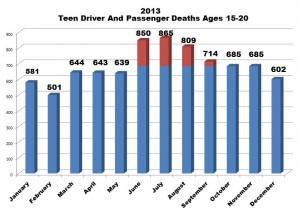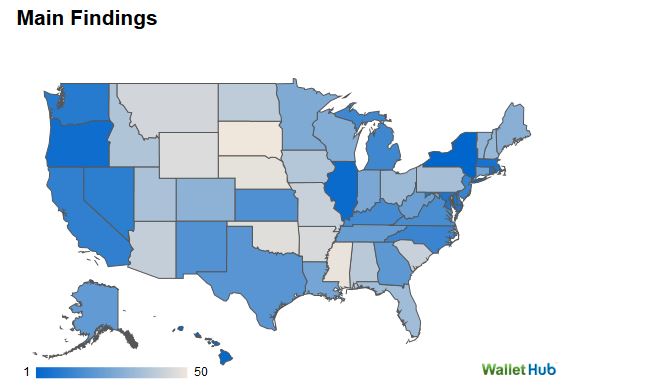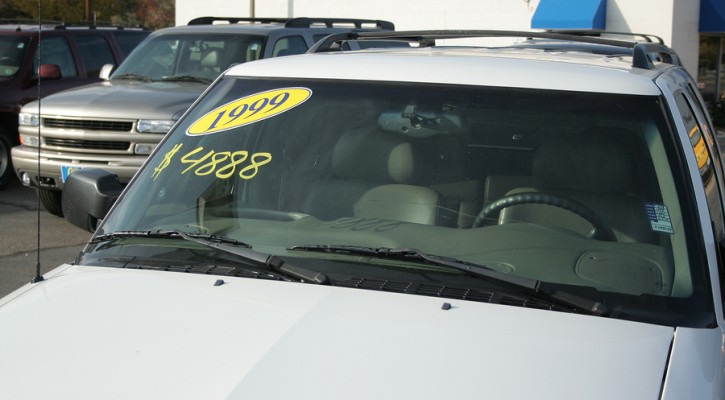Tag Archive: Teen driving safety

Teens Drive Better When Mom Comes Along
May 8, 2015
Teens drive better when mom comes along and they feel good about it too according to a study conducted by the Beckman Institute for Advanced Science and Technology, University of Illinois, Urbana – Champaign.
In this novel study, 25 fourteen year old teens were each placed in an fMRI machine that allowed the researchers to view and record their brain activity while driving a computer simulated driving course. The fMRI machine shows blood flow to areas of the brain that are most active. The teens were paid for their participation but they were also told that, if they scored the fastest time, they would get more money.
The course had 26 intersections and the timing of the lights and the presence of cross traffic varied so that the teens wouldn’t experience the same traffic patterns each time. If the teen stopped at a traffic light, it cost them three seconds added to their time. If they attempted to run a red light and were involved in a “crash,” it cost them 6 additional seconds.
When teens drove alone, they were much more likely to try to make it through a yellow light before it turned red. If they made it through safely, without costing them any more time, the researchers were able to see more blood flow to the reward center of the brain. In other words, the teens felt good about their decision and you could witness that good feeling as it appeared in the brain.
When the teens were told their mom was watching, the teens drove much more carefully and tended to stop when they encountered a yellow light. The strange thing is that, with mom “in the car,” the same reward area of the brain lit up when they drove safely.
It appears that, if a parent is along, teens tend to take fewer chances and they actually feel rewarded by driving in a safe manner.
Of course mom can’t be in the car at all times but there are systems that allow moms to look over their teen’s shoulder. There are a variety of apps and plug-in systems that report if the teen is driving aggressively, turn off the cell phone and inform the parents of the teen’s location. If only they could bake cookies too.
Read more: Having Mom in the Car Changes Teen Driver’s Brain

100 Deadliest Days For Teens
May 7, 2015
May is here and that means proms, graduations and the beginning of the 100 deadliest days for teens. Due to the above average number of teen driving deaths, the summer driving period – between Memorial Day and Labor Day – is historically known as the 100 deadliest days for teens.
In 2013, the last year for which there are figures, there was a monthly average of 685 teen drivers and passengers, aged 15 through 20, who lost their lives on US roadways. During the months of June through September, 498 additional teen drivers and passengers lost their lives in traffic crashes; an increase of 18.25% over the annual monthly average.
 What are the reasons for this increase in teen traffic deaths? Some of the reasons include:
What are the reasons for this increase in teen traffic deaths? Some of the reasons include:
- Lack of experience behind the wheel.
- Bored, unsupervised teens looking for excitement.
- Distracting passengers.
- Long, hot days on the beach or lake that can lead to dehydration and fatigue.
- Use of alcohol and drugs.
What can parents do to reduce this risk?
- Set limits for the number of passengers a teen can carry (this limit may already be set by law in your state).
- Set and enforce curfews.
- Keep your teen busy with chores or a summer job.
- Ban the use of cell phones and texting while driving.
- Avoid the temptation to check up on your teen by calling or texting while the teen may be driving. Instead, set a rule that the teen must call you upon arrival at a destination and upon departure.
- If necessary, use a smartphone app that can limit your teen’s cell phone use while driving along with tracking his or her whereabouts.
- Agree upon and sign a teen driving contract with your teen and enforce penalties for violations.
- If your teen is to be a passenger of another teen driver, know who that driver is and refuse permission if the teen is carrying too many passengers. Every teen passenger a teen driver carries increases the crash risk.
Don’t let your teen become a 100 deadliest days statistic.

Best States For Teen Drivers: Florida Ranks 34th
January 14, 2015
In a list of best states for teen drivers, Florida ranked 34th according to a survey conducted for Wallet Hub. Wallet Hub is a website designed as a one-stop site to help individuals and businesses make financial decisions and their teen driver survey is primarily focused on the financial aspect of teen drivers in the home. However, teen driver safety issues and laws designed to keep teen drivers safe play a big part in the total cost of teen driving.
To conduct their survey, the researchers considered various aspects that contribute to cost and safety where teen drivers are concerned. Factors that were considered included:
- The number of teen drivers in each state
- Teen driver fatalities
- Impaired-driving laws
- Graduated driving laws
- Average cost of car repairs
- Cost of insurance
A correlation can be seen between strong graduated driving license laws (GDL) and teen driver safety. Several studies have shown that states with strong GDL laws have lower teen fatality rates. The Insurance Institute for Highway Safety (IIHS) created a GDL crash reduction calculator that shows Florida would experience a 20 percent reduction in insurance rates and a 45 percent reduction in teen fatalities if the state were to adopt the strongest GDL laws on the books in other states.
For a complete list of of the best states for teen drivers, visit: 2014’s Best and Worst States for Teen Drivers

Teens Killed More Often In Older Cars
January 7, 2015
The older cars passed down to teen drivers may not be the best choice when it comes to keeping teens safe on the road. Research by the Insurance Institute for Highway Safety (IIHS), shows that most teens killed in traffic crashes were driving a vehicle that was at least six years old and almost half were driving vehicles that were eleven years old or older. Continue Reading

More Evidence Supports Later School Start Times
November 19, 2014
Another study has been published showing that later start times for high schools can reduce teen crashes. The study, conducted by the Eastern Virginia Medical School followed another, earlier study conducted in 2011 that looked at teen crash rates in two Virginia school districts with different high school start times.
The latest study looked at teen crash rates in Virginia’s Chesterfield and Henrico counties. After determining that there were no discernible differences in the adult crash rate between the two counties, the researchers compared the teen crash rates for the two counties. The researchers found that the crash rate for teens in Chesterfield county where school begins at 7:20 AM was significantly higher than the teen crash rate in Henrico county where school begins almost one and a half hours later at 8:45.
These findings agree with earlier, similar studies that led the American Academy of Pediatrics to issue a policy statement last August calling on school districts across the nation to adjust their high school start times no earlier than 8:30. According to the Academy statement, teen sleep rhythms naturally shift and it’s nearly impossible for teens to get to sleep earlier than 10:30 PM. Developing teens also need more sleep than adults. When schools start too early, it’s impossible for teens to get the needed amount of sleep leaving them fatigued and at risk when they drive. Other studies also point to a correlation between later start times and higher standardized test scores for teens.
All of the research points in the same direction. Later school start times for teens can save lives. School boards and administrators in districts where school starts earlier than 8:30 AM need to be made aware of this data and should be urged to move the start times to later in the morning.
For more information, read: Research reinforces link between increase in teen driver crashes and early high school start times
